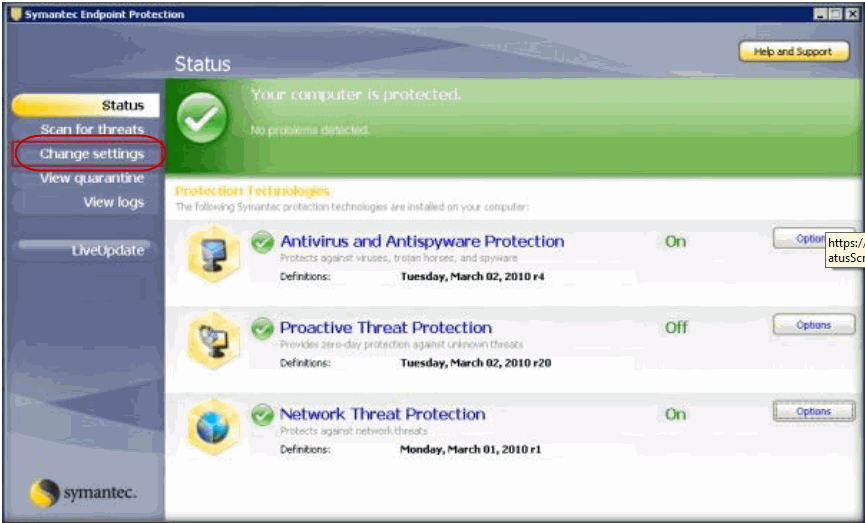

- #SYMANTEC ENDPOINT MANAGER DISASTER RECOVERY INSTALL#
- #SYMANTEC ENDPOINT MANAGER DISASTER RECOVERY FULL#
- #SYMANTEC ENDPOINT MANAGER DISASTER RECOVERY WINDOWS#
Recovery Manager for Active Directory supports VMware vCenter/ESX version 6.7 for creating virtual test environments in Active Directory Virtual Lab. Support for VMware vCenter/ESX version 6.7 in Active Directory Virtual Lab
#SYMANTEC ENDPOINT MANAGER DISASTER RECOVERY WINDOWS#
Support for native Windows Server backups by converting them to RMAD BMR backups using PowerShell API. Recovery Manager for Active Directory 10.1 HF1Ĭonvert Windows Server Backup to RMAD BMR Backup Recovery Manager for Active Directory 10.1 HF2įEATURE PREVIEW: Support for Broadcom Endpoint Security Recovery Manager for Active Directory supports malware scan for BMR and Active Directory backups using Broadcom Endpoint Security (former name: Symantec Endpoint Protection 15). Custom scripts can be launched either on the Recovery Manager for Active Directory Console machine or on the domain controller side. Run PowerShell Scripts before and after creating a backup This option allows you to customize your environment by running PowerShell scripts before and/or after creating a backup.
#SYMANTEC ENDPOINT MANAGER DISASTER RECOVERY FULL#

This option is effective if having limited number of clients in the network.
#SYMANTEC ENDPOINT MANAGER DISASTER RECOVERY INSTALL#
Install a new fresh SEPM, then use the Sylink.xml file to establish the communication between new SEPM and the existing SEP clients with the help of Sylink replacer tool.

H) Once verified that all the clients are reporting into the new SEPM, and have moved away from the old one, proceed to the next step. G) Stop the "Symantec Endpoint Protection Manager" and "Symantec Embedded Database" service on MACHINE_1 to verify whether all client now report to the new SEPM on MACHINE_2 Note: Replication is an option, if you do replication and remove the old server that is the Primary SEPM, in future if you want to do replication you will not be able to do so.Ģ.Follow disaster recovery method & Create a new MSL.as per followingĪ) Follow "Best Practices for Disaster Recovery with Symantec Endpoint Protection" (see Related Articles below) to backup and reinstall SEPM on MACHINE_2Ĭ) Click Policies > Policy Components > Management Server Lists > Add Management Server Listĭ) Click Add> Priority and a new Priority would get added named as "Priority2"Į) Add MACHINE_1 under Priority 2 and add MACHINE_2 under Priority 1, and assign this New Management Server List to all the groups.į) Clients will then move from old SEPM to new one gradually See "How to move Symantec Endpoint Protection Manager from one machine to another" Use replication to install a new SEPM and keep the policy the same with old SEPM. If the new SEPM server has a different IP and host name, there are two alternatives:ġ.


 0 kommentar(er)
0 kommentar(er)
